How to Tell If You Have an Interference Engine

Petrol-run combustion engines use either the non-interference or the interference technology to operate.
There are limited types of engine designs and categories, but most of these engines fall under the non-interface and interface category. This guide shows you how to tell if you have an interference engine.
Most of the modern car models and brands run on interference combustion engines as they are more powerful and reliable.
Interference engines are mostly 4-stroke engine types that don’t have enough clearance between the pistons and valves, and when the timing belt breaks, the camshaft will fail.
As for the non-interference engines, they have adequate clearance between the pistons and valves, and will not cause the failure of the camshaft even after the timing belt breaks.
Interference engines are the most common choices today.
Understanding the Differences Between Interference and Non-Interference Engines
Most of the differences between non-interference and interference engines are in their design.
Most, if not all, engines have a timing chain or timing belt, which synchronizes the crankshaft and camshaft.
The work of the camshaft is to run the valves. The crankshaft aids propel and control the up-and-down movement of the pistons and valves to the transmission and wheels.
Most manufacturers are creating high power and performance smaller engines capable of handling bigger jobs that the bigger old-fashioned models cannot perform.
Interference engines are highly preferred because they are proven to breathe better, and their compression ratio is a bit higher, which guarantees better performance. Modern interference engine models have bigger valves that open up to the combustion chamber.
The combustion chamber is usually smaller, which enables the engine to achieve high compression.
These small yet redesigned engines deliver higher performance and efficiency. The risk of damage is, however, higher in the event of belt snap.
When the belt is broken, the piston and the valves will collide, which could lead to engine failure.
How to Tell If You Have an Interference Engine
If you’re wondering whether your car engine is interference or non-interference, here is a comprehensive guide on how to tell if you have an interference engine. But before everything else, it’s good to understand that many of the modern cars run on interference engines.
Auto manufacturers are trying their level best to supply high-end cars that run on the most efficient and reliable engines.
And since interference engines allow for easy customizations, they are manufacturing smaller car engines with high compression ratio and wider valves to ensure quality airflow.
They do so by lowering the combustion chamber’s volume, which results in high-performance and efficient engines.
If you surely want to know how to tell if you have an interference engine or not, there are various ways to do it. One of the best ways to do it is to talk with your mechanic.
When next you stop by your favorite mechanic’s workstation to change the car oil, inquire from them about the type of engine your car runs on. Auto manufacturers provide all the details of every car model they make in the service manual.
In most instances, only your mechanic will know where to find such information and so asking them could help lessen your search work.
The next easy and effective way to tell if your car engine is interference or not is to use Google. Wikipedia provides details of different car models and their engine types.
All you need is to read your engine model and use it as a reference to determine if your engine is interference or not.
How to Protect Your Interference Engine?
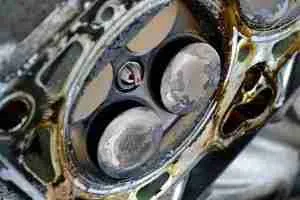 If, after inquiries, you realize that your car engine is the interference type, you need to know how to protect it against damage.
If, after inquiries, you realize that your car engine is the interference type, you need to know how to protect it against damage.
One way to do so is to replace the engine’s timing belt as per the manufacturer’s scheduled maintenance guidelines. You can find this information on your car’s service manual.
If your car’s service manual doesn’t have this information, you can search for it on the internet lists, though they may not always be current.
Your car engine type notwithstanding, you should ensure you change its timing belt on time to avoid breakdowns.
Most timing belts have an expected lifespan of 60,000 to 100,000 miles. But this information is not always readily available.
Hence, if you have no idea about the lifespan of your engine’s timing belts, you may have to conduct visual inspections on your engine regularly. As you visually inspect your car engine’s timing belts, look for damage signs such as abrasions and cracks.
When damaged, the timing belt will make the car engine start producing squealing sounds. So, when you hear such sounds, it will be the ideal time to change the timing belts of your car.
The timing belt is one of the most vital parts of interference engines. They play not only complicated but also critical roles that cannot be played by any other part of the engine.
And so, changing them regularly can significantly impact the life and general health of your car.
How To Repair Bent Valves on Your Interference Engine
When your interference engine develops issues, you may as well need to check the cylinders, valves, and pistons for damage.
When the cylinders and pistons are damaged, the engine should be replaced or rebuilt.
However, if only the valves are bent, you should replace them and rebuild the cylinder head.
You may also need to replace the timing belt and chain components. This process can be time-intensive and costly, so it’s wise you get a professional to do it.
Are interference engines better?
No, interference engines are not better. In fact, these types of engines can often cause more problems than non-interference engines as when something goes wrong with an interference engine, it quickly gets worse and can result in a pretty hefty bill from your mechanic.
Despite this, interference engines are incredibly common, and most cars are actually fitted with this type of engine as they are often larger and more powerful than non-interference engines.
Additionally, as long as you are experiencing no issues with your engine then an interference engine is actually better than a non-interference engine.This is because interference engines often have a high compression which a lot of manufacturers want in an engine for their vehicle.
So as long as you are not experiencing any issues with your interference engine then it is better, but as soon as something goes wrong they are definitely worse.
Why do they make interference engines?
The main reason that manufacturers produce interference engines, despite their issues, is because they give the manufacturer a lot of control over the various performance features of the engine.
This allows car manufacturers to optimize various components of the engine to fit the specifications of that vehicle. There are lots of different features which can be optimized to ensure that the vehicle with that engine performs better.
These include compression ratio which allows manufacturers to make their cars more efficient in terms of energy consumption. They also include raw power and fuel efficiency allowing manufacturers to alter the engine so that it suits the needs of the vehicle, allowing it to perform better in all aspects.
So while it can be hard to understand why interference engines are constructed due to all of the things that can go wrong with these engines, there are some clear reasons why they are manufactured so regularly.
What happens when timing belt breaks on interference engine?
As we have said, the issue with interference engines is that once one thing goes wrong, everything goes wrong. This also applies to the timing belt.
So when the timing belt breaks in your vehicle, the entire engine will stop working. If you are driving your vehicle with an interference engine and the timing belt snaps, the first thing that will happen is the camshaft in your vehicle’s engine will stop turning.
This will leave some of the valves in your engine in an open position. Even though the camshaft has stopped turning on command, it will continue to turn through the power of inertia which will keep the pistons moving.
These pistons will then come into contact with the open valves which will damage both the valves and the pistons. This can cause heavy damage to your engine, and require lots of work and money to be fixed.
What Ford engines are interference?
Despite the issues that have been connected with interference engines, a lot of manufacturers still utilize this type of engine in their vehicles. These manufacturers include one of the most famous car manufacturers in the world, Ford.
From the older models through to the newer models, the list of Ford vehicles that use an interference engine is very large. So if you have a Ford car then there is a very good chance that your vehicle has an interference engine.
Here’s a partial but not complete list of all of the Ford vehicles with an interference engine:
- Ford Escort
- Ford Lynx
- Ford Probe
- Ford Ranger
- Ford Crown Victoria
- Ford Zetec
- Ford Ecoboost
As we have stated, this is not a complete list as the amount of Ford vehicles that exist is very large. So if you have a Ford vehicle and are unsure whether or not it has an interference engine, it is best to do a quick search for your specific vehicle model.
What Subaru engines are interference?
It is more difficult to identify whether or not a Subaru has an interference engine as this company uses a combination of interference and non-interference engines depending on the model.
A rule of thumb to identify whether or not your Subaru has an interference engine is to consider the age of your vehicle. Subaru used to use non-interference engines in their vehicles but moved to interference engines in recent years.
So if your vehicle was manufactured before the mid-90s then there is a good chance it will have a non-interference engine. Whereas if your vehicle is newer than this then it probably has an interference engine.
Due to this, it is impossible to determine which models have an interference engine and which don’t, so it is easier to just consider the age of your vehicle and work it out from there.
Are VW engines interference?
Yes and no. Like with many car manufacturers some VW engines are interference models, but some are not. In the case of Volkswagen engines, the majority of engines are non-interference, but they do also work with interference engines as well.
It seems that VW has moved in the same direction as many other companies as they traditionally used non-interference engines and then moved onto interference engines.
In order to identify whether or not your vehicle has an interference engine, you will have to take a look at the specification for the engine in your vehicle.
The list of engines that VW uses is very slim, and because of this, it is easy to determine which are non-interference and which are interference.
Here is a list of engines that VW use:
- 16 Valve diesel engines – Interference
- VR6 Engine – Interference
- 2.0L – 8 Valve – Non-interference
- TDI 1.8L – 8 Valve – Non-interference
Conclusion
The article above provides the solutions you’ve been seeking if you’ve wanted to know how to tell if you have an interference engine or not.
You’ll know the type of engine you’ve based on the car model and brand you drive. As well, you’ll get an idea of how to repair minor interference engine faults.
Telling the exact type of engine you’ve can be a tricky process. And so, inquiring from your mechanic for assistance could be a great way out.
Also, consider having your mechanic check your engine for faults and other problems as often as possible.

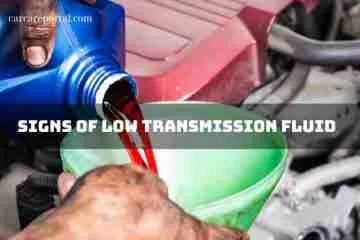




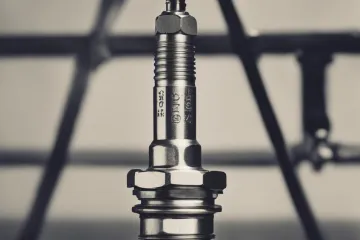
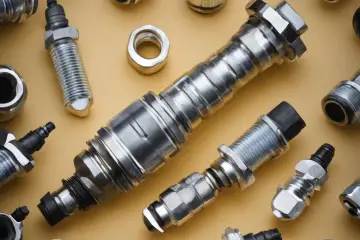




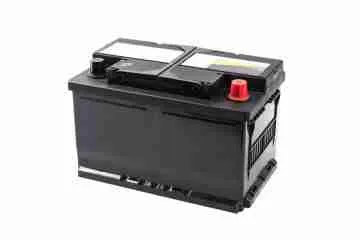

No Comment